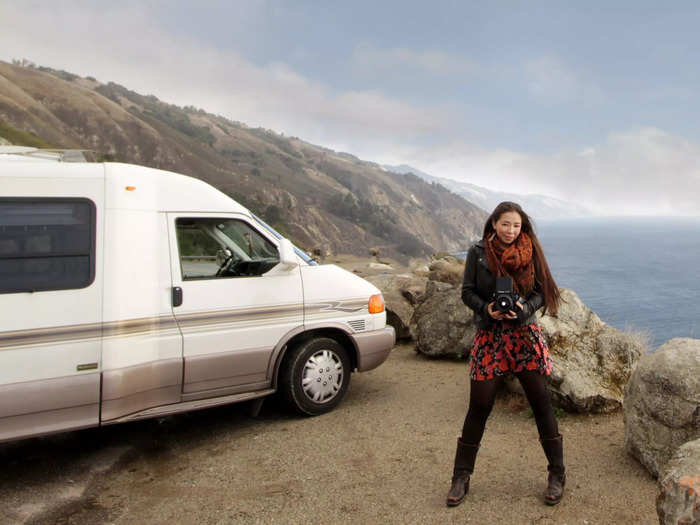
Matika Wilbur takes intimate portraits of Native people across America.Matika Wilbur

Wilbur herself is Swinomish and Tulalip. She began Project 562 after her grandmother appeared to her in a dream and told her to leave an assignment in South America and photograph her own people.

When Wilbur began her project in 2012, there were 562 federally recognized Native American tribes. Now, there are 574.

"We're always redrafting the language to describe this project," Wilbur told Insider in 2016.

The Zone System creates more dynamic range in the images.

"I figured that that was sort of irresponsible when I started this project, to travel all over the country and not show the landscape," Wilbur said.

"Sometimes I'll be in the Grand Canyon and I'd rather take somebody's picture at Havasupai Falls because it's magnificent and there's this incredible blue-green water coming out of the ground ... and they want to be photographed on their front porch because they love where they live," she said. "I'll do what they want to do because people should be represented in a way that is important to them, especially in Indian Country."

In the above portrait, Wilbur photographed three members of the Tulalip tribe: Darkfeather, Bibiana, and Eckos Ancheta.

Dine' (Navajo Nation) member Jaclyn Roessel posed for one of Wilbur's portraits.

Their conversations touch on family, love, heartbreak, moments that shaped them, and their hopes for the future.

"I find that people have really interesting things to say when you ask them what it means to be whatever their tribe is, and then when you ask them what it means to be an 'Indian,'" she said. "I'm fascinated by that."

Ailee Fregoso of the Cheyenne River Sioux tribe showed off her colorful fringed shawl.


Wilbur also co-hosts the podcast All My Relations, in which she, Desi Small-Rodriguez, and Adrienne Keene discuss their relationships to land, ancestors, and other Native peoples.

"I didn't know that strangers can become family relatively quickly," she said. "It's such a whirlwind of a journey."
 Colon cancer rates are rising in young people. If you have two symptoms you should get a colonoscopy, a GI oncologist says.
Colon cancer rates are rising in young people. If you have two symptoms you should get a colonoscopy, a GI oncologist says. I spent $2,000 for 7 nights in a 179-square-foot room on one of the world's largest cruise ships. Take a look inside my cabin.
I spent $2,000 for 7 nights in a 179-square-foot room on one of the world's largest cruise ships. Take a look inside my cabin. An Ambani disruption in OTT: At just ₹1 per day, you can now enjoy ad-free content on JioCinema
An Ambani disruption in OTT: At just ₹1 per day, you can now enjoy ad-free content on JioCinema Rupee falls 7 paise to settle at 83.35 against US dollar
Rupee falls 7 paise to settle at 83.35 against US dollar
 6 Fruits you should avoid keeping them in Refrigerator
6 Fruits you should avoid keeping them in Refrigerator
 Vegetable prices to remain high until June due to above-normal temperature
Vegetable prices to remain high until June due to above-normal temperature

Copyright © 2024. Times Internet Limited. All rights reserved.For reprint rights. Times Syndication Service.